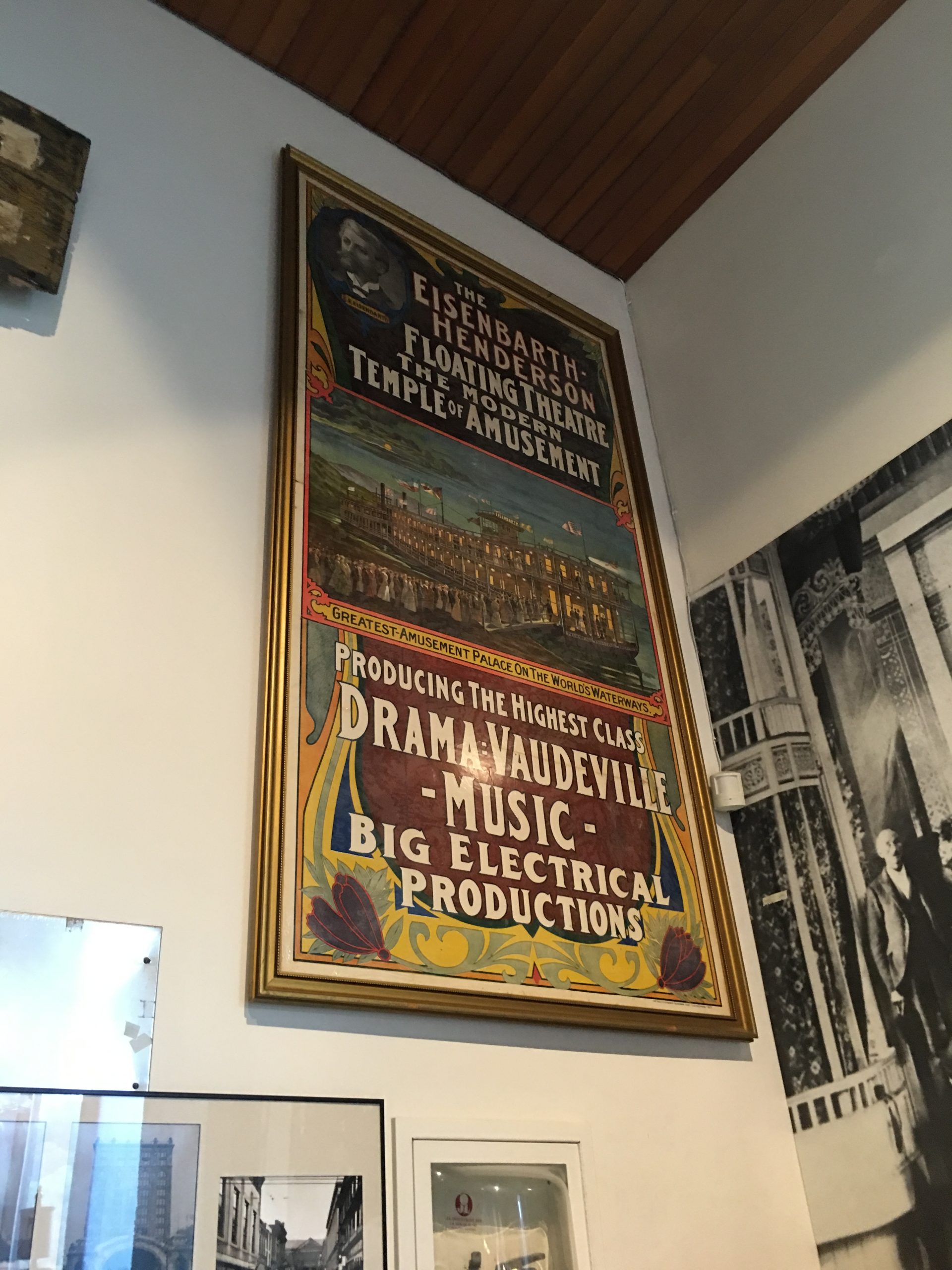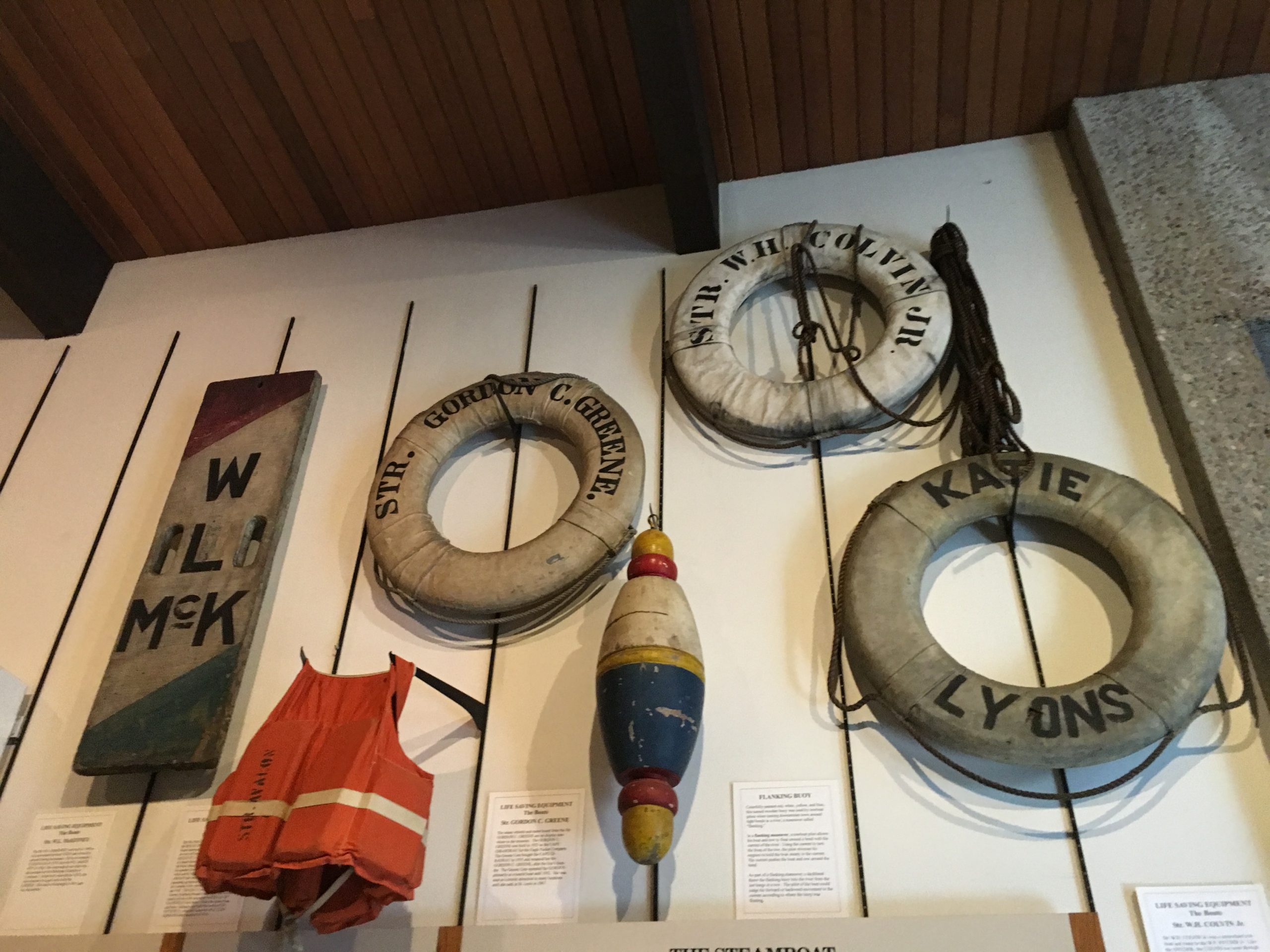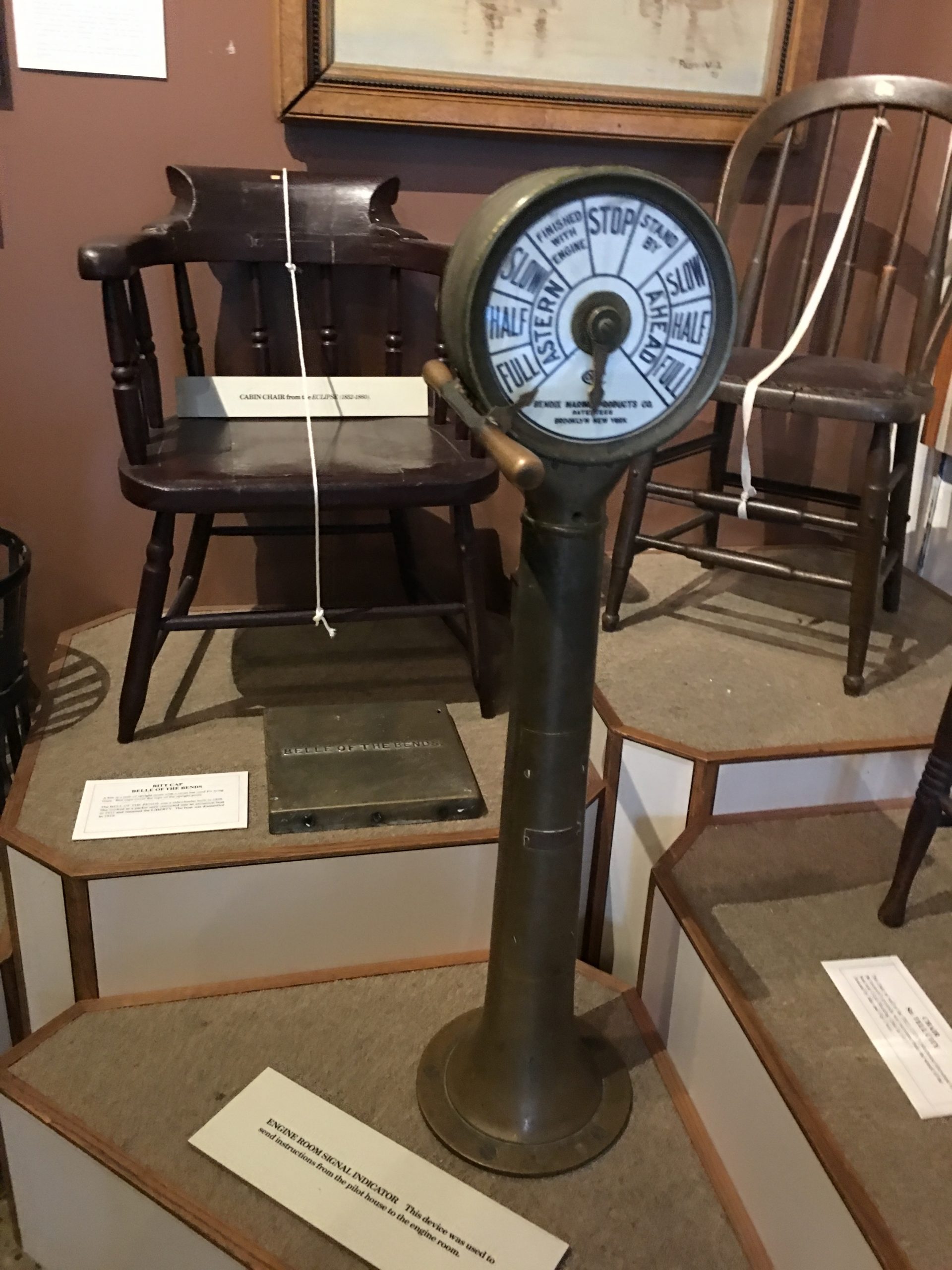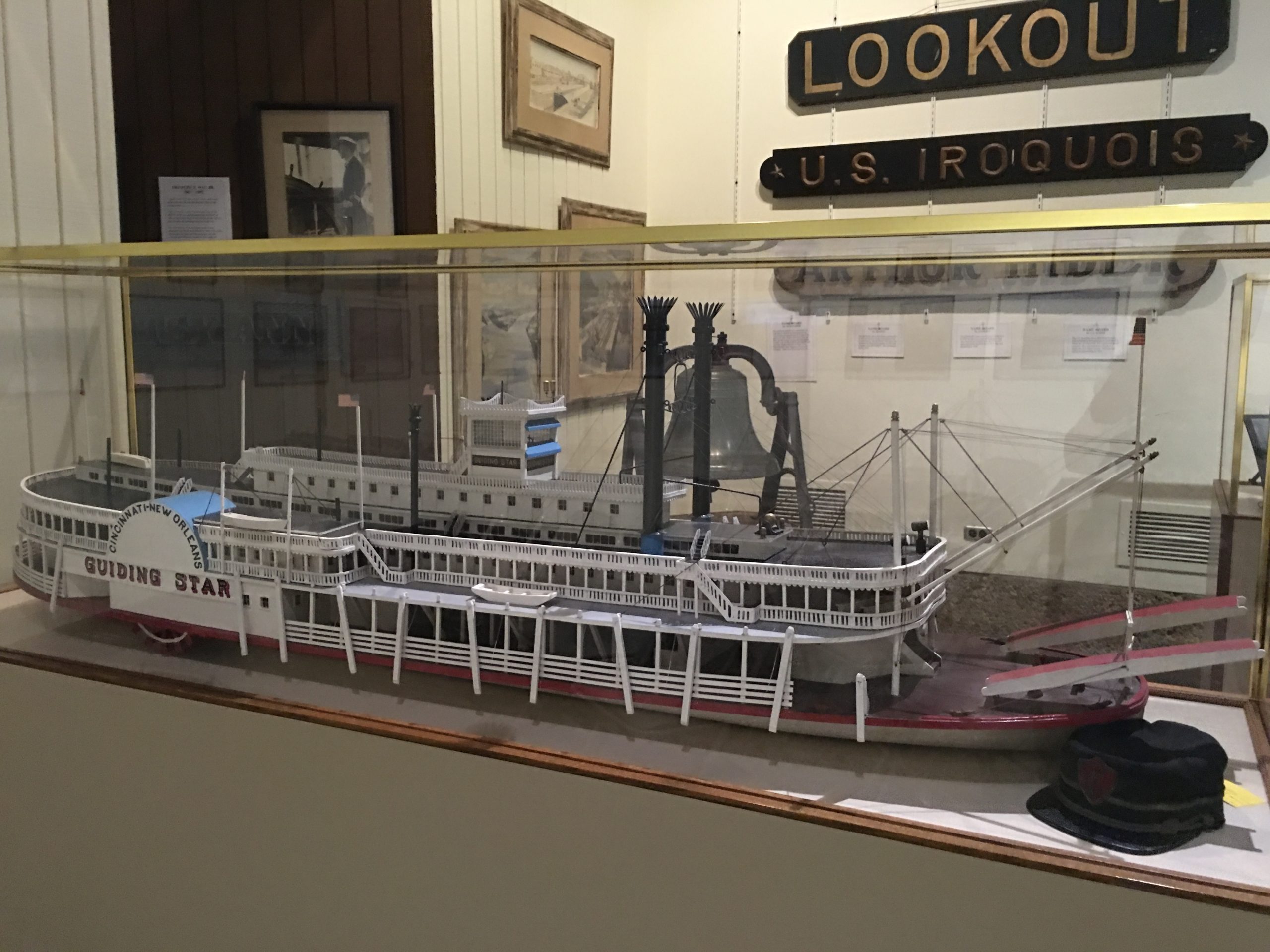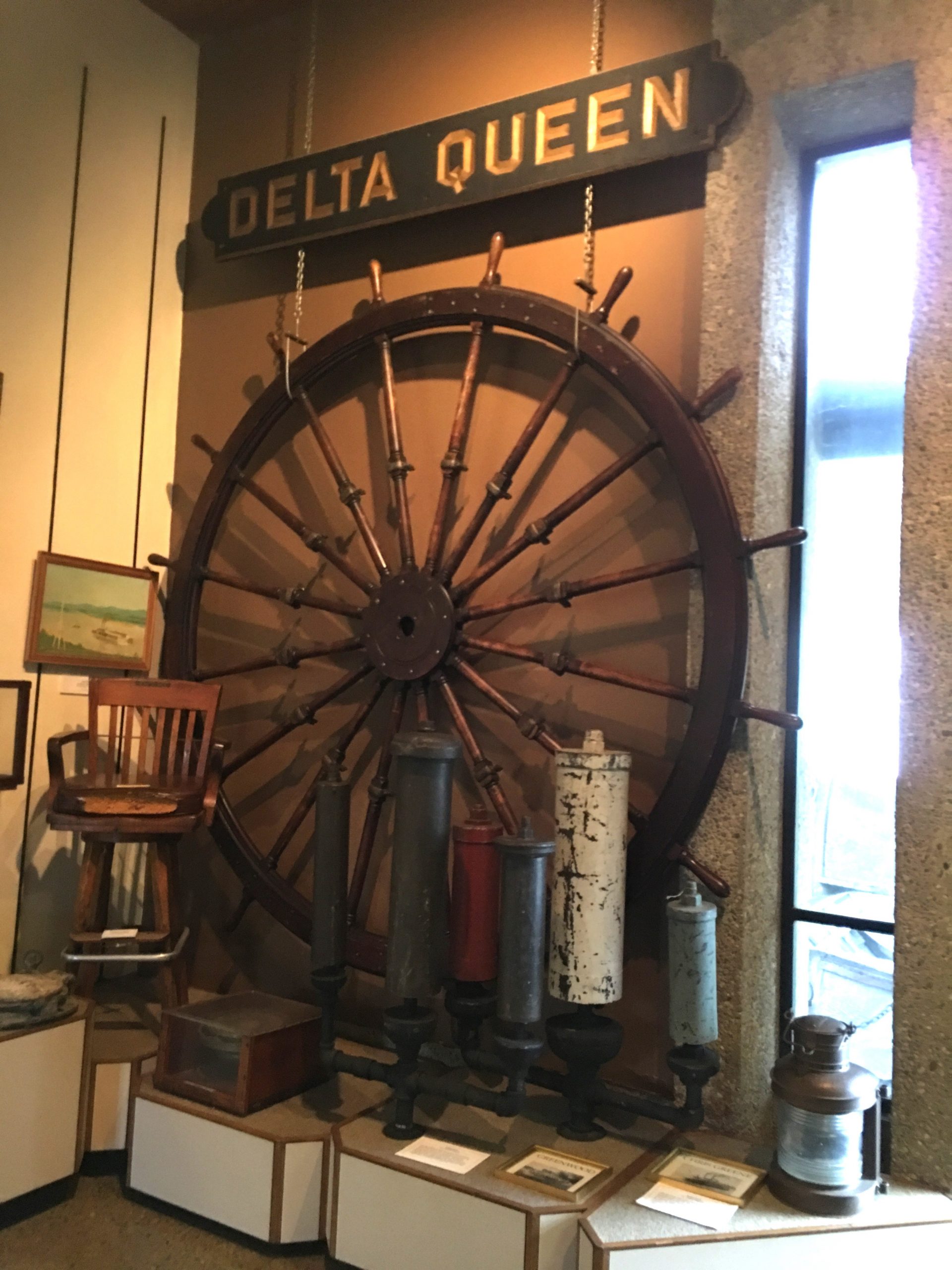Update: The Ohio River Museum is currently closed for renovation. Check the website for more information.
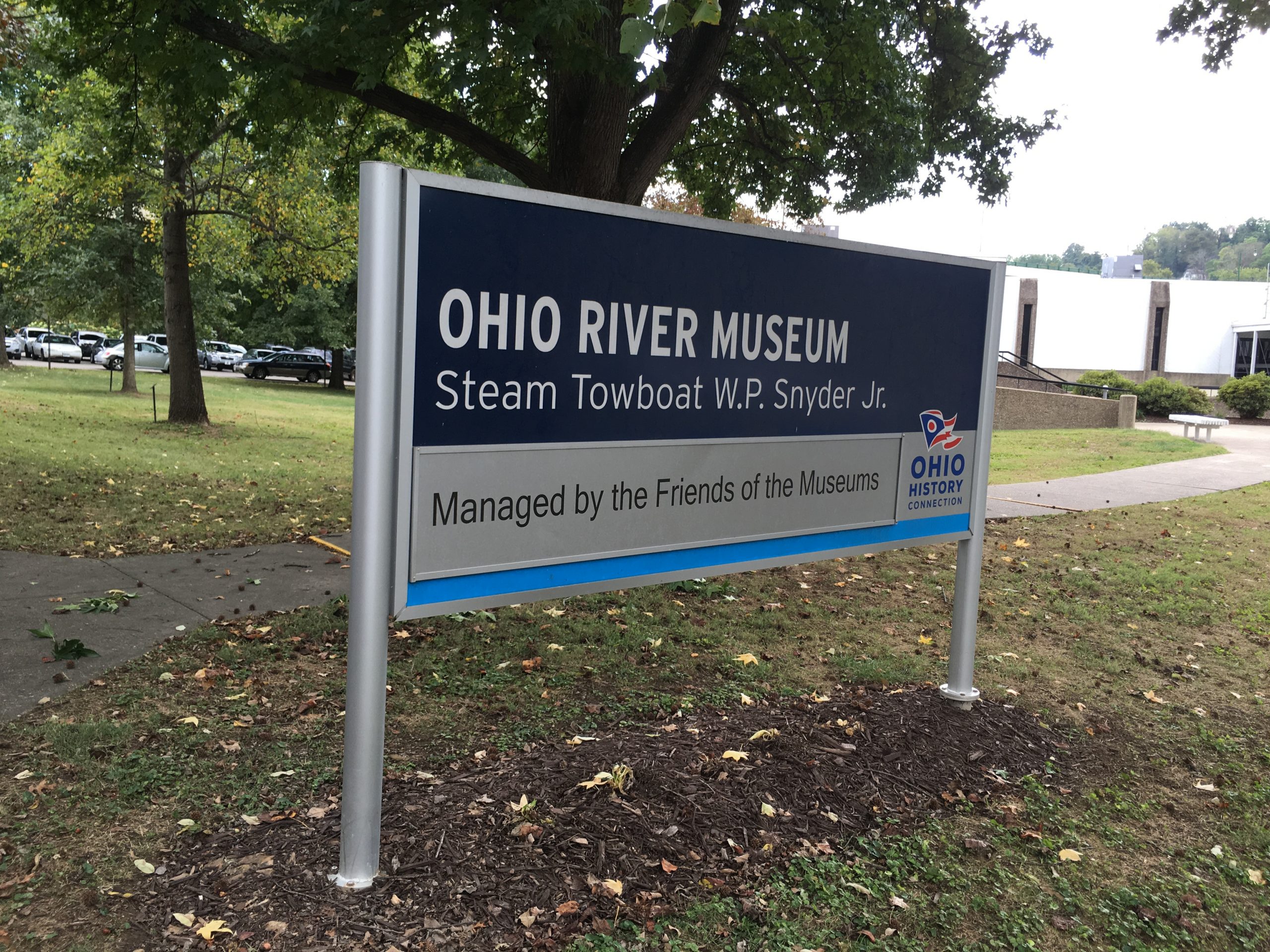
Stationed along the Ohio River in the town of Marietta is the Ohio River Museum. Located in southeast Ohio, Marietta was the state’s first permanent settlement dating 1787. Because of its location at the confluence of the Ohio and Muskingum Rivers, this was site was once a bustling port for importing and exporting goods as well as passengers along its waterways. The Ohio River Museum highlights the importance of this river system and the transportation vessels that once occupied these waters.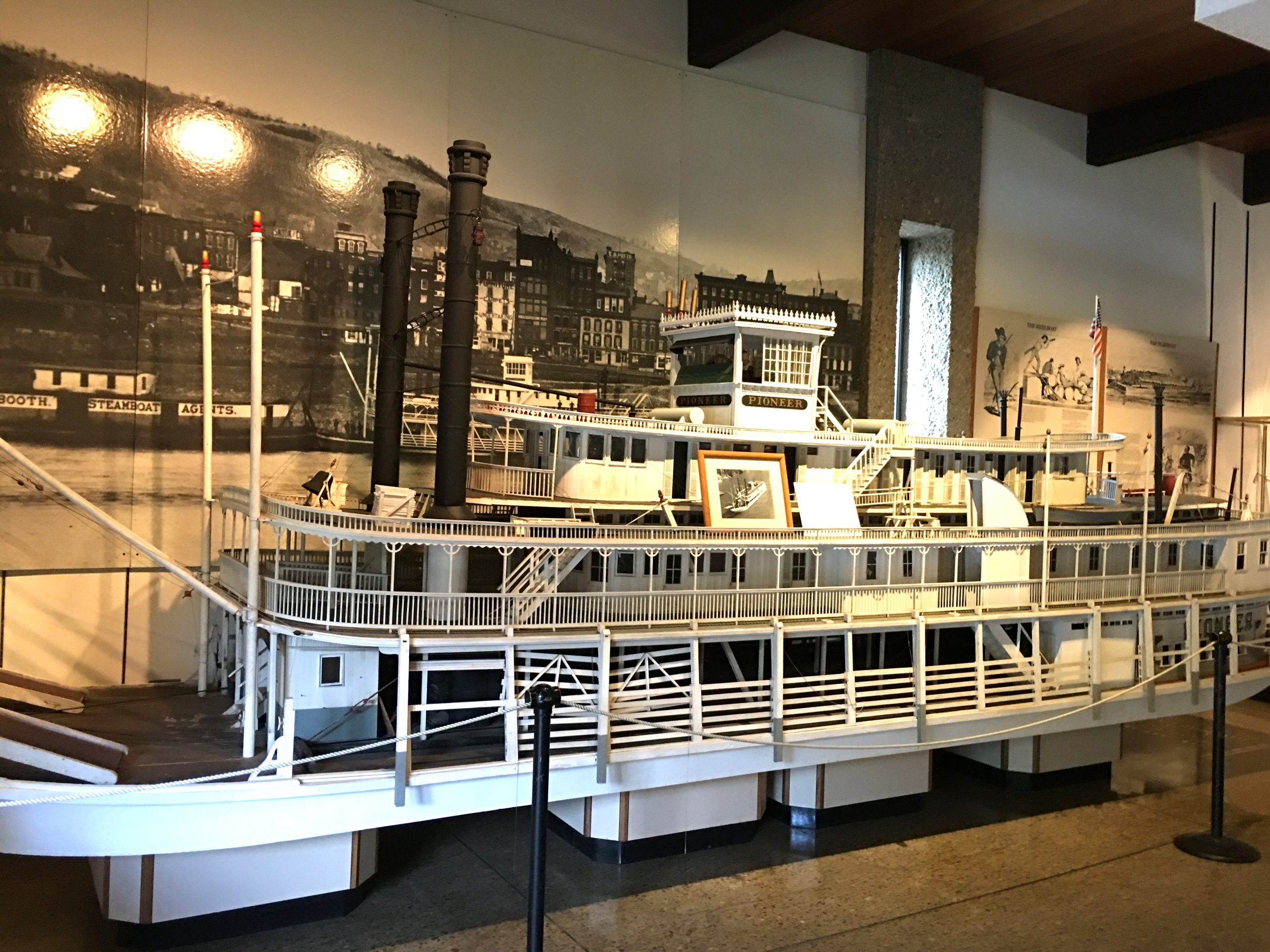 The first successful steamboat dates back to the late 1700s when John Fitch mastered the building of the vessel with its primary purpose to transport goods along the Delaware River. The Ohio River Museum displays a beautiful replica of the “Pioneer” which was a shipping vessel among the Great Lakes fleets dating back to 1901.
The first successful steamboat dates back to the late 1700s when John Fitch mastered the building of the vessel with its primary purpose to transport goods along the Delaware River. The Ohio River Museum displays a beautiful replica of the “Pioneer” which was a shipping vessel among the Great Lakes fleets dating back to 1901.
In the early 1800s, Marietta became a location where sea-faring vessels were built transporting goods to Cincinnati, New Orleans and New York. The first seafaring vessel, the St. Clair, was built in Marietta scheduled to arrive at the Gulf of Mexico. With its 60-foot masts, it was three times the size of previous riverboats. Imagine in 1801, most of the population of Cincinnati, waiting along its banks to watch the St. Clair float along the Ohio River.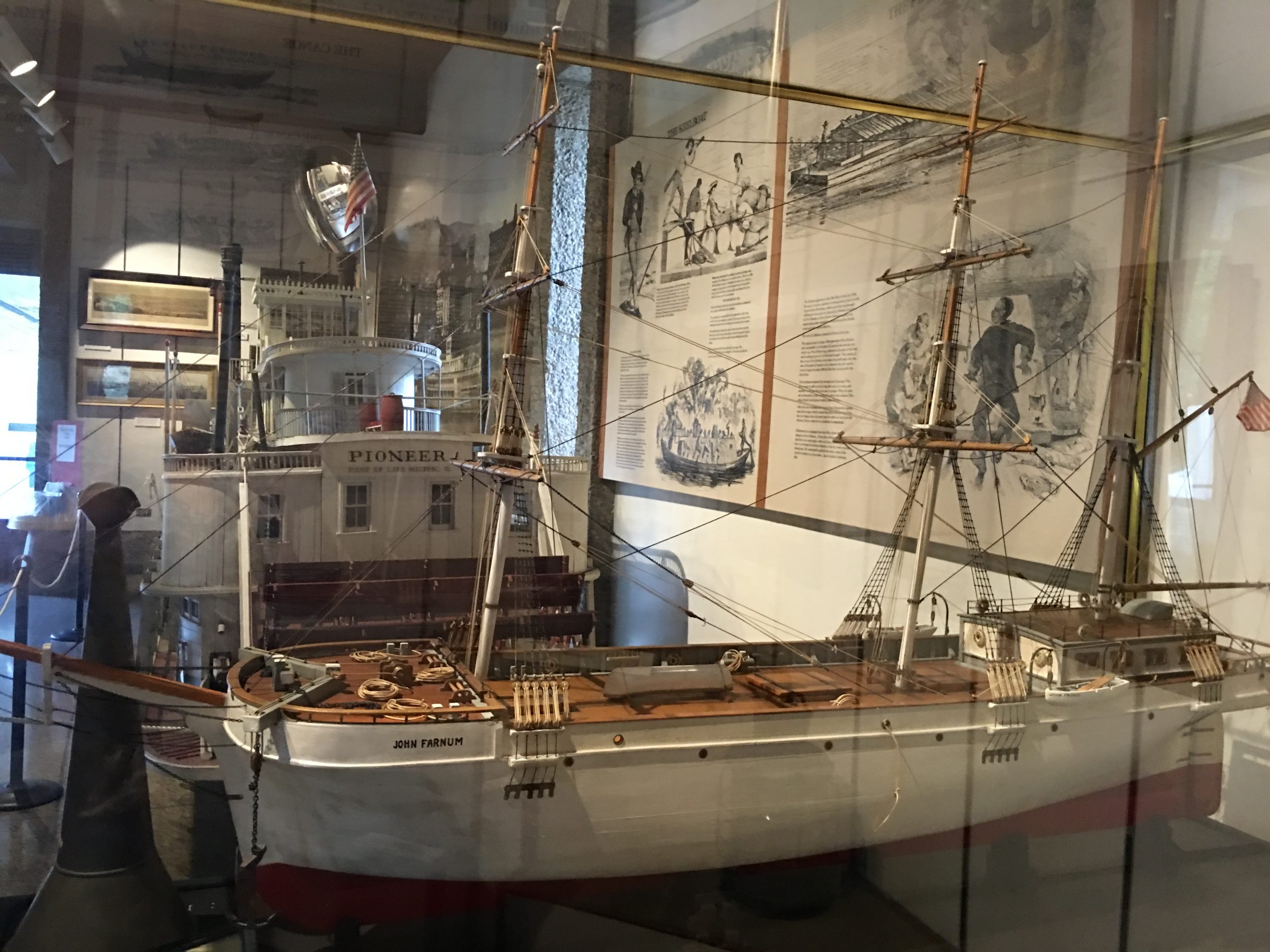 At the Point in Marietta, additional seaworthy vessels were being built to include the John Farnum schooner. This beautiful vessel is on display at the Ohio River Museum. The Historical Marietta blog provides the following information about this barque.
At the Point in Marietta, additional seaworthy vessels were being built to include the John Farnum schooner. This beautiful vessel is on display at the Ohio River Museum. The Historical Marietta blog provides the following information about this barque.
“She was two hundred and forty-nine and one half tons. Her keel was laid in the Spring of 1846 and she was launched in February 1847. She was towed at once to Portsmouth where she took on a cargo of Indian Corn. She was measured, inspected and cleared at Louisville, Ky. Her destination was ‘Cork or a Port.’
She arrived at Cork in May, 1847 during the great famine in Ireland and returned to Philadelphia in August and was sold to Potter, McKeever & Co. of that city. The Master builder was Capt. William Knox, of Harmar. Capt. A. B. Waters had charge of the vessel and cargo with Capt. George Hatch as Navigator. Capt. Hatch was afterwards Mayor of Cincinnati.”
The steamboat would eventually become a mode of transportation for passengers in the 1820s. Depending on the size of the vessel, the number of crew could range from 5 to 120.
Many of the ships would offer entertainment for its passengers to include Vaudeville acts, band performances and theater productions.
The captain’s main purpose was to ensure the safety of cargo and passengers onboard and monitor the financial success of each voyage. Safety devices such as posted placards, life jackets and life rings were readily available to passengers.
Additional positions included the clerk, who handled the exchange of money; the engineer who maintained the mechanical safety of the vessel and the pilot. The pilot was navigator who was responsible for guiding the ship along the waterway. Under the pilot (and captain) was the mate. There were also the roustabouts (laborers) and the cabin crew.
The pilot would communicate with the engineer by use of the Engine Room Signal Indicator.
The Guiding Star traveled between Cincinnati and New Orleans between 1878 to 1893 when it was destroyed by a fire on January 6.
The Delta Queen is quite possibly the most known of all of the steamboats as it continues to sail between Minneapolis to Pittsburgh today. She is the sister ship to the Delta King which is currently docked in Sacramento.
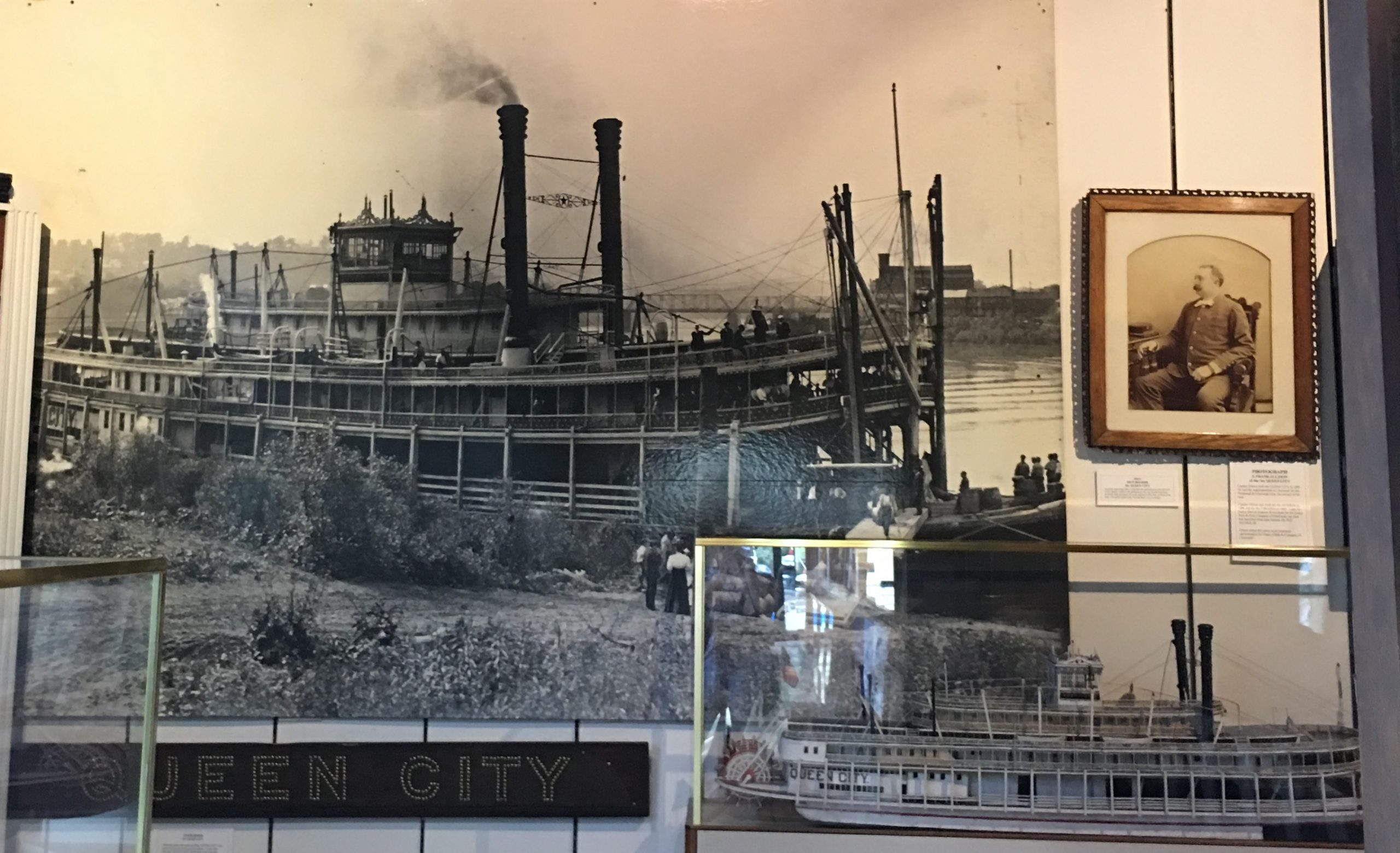
The Queen City was one of the grandest packet boats to work the river. Built in 1897 by the Cincinnati Marine Railway Company for the Cincinnati – Pittsburg route, she also sailed along the Chattahoochee, Kanawha, Mississippi, Monongahela and Ohio Rivers. According to the Ohio County Public Library, “The Queen City was designed for high class patronage at a time of affluence. Captain Ellison was influenced in his design by the Idlewild and he had made a study of Great Lakes steamers which he utilized. Her mahogany cabin was finished in gilt trim and the ceiling was of pressed metal sheets with ornate design. She had wire mesh railings studded with rosettes. She had a carved figurehead rising from her stem which she retained until she was rebuilt at Mound City, Illinois in 1920.”

“A metal Queen City emblem in gold appeared on each stateroom door. Her grand piano was presented by the Cincinnati Chamber of Commerce. She had oil paintings on the rounded cabin bulkheads. She had shining brass oil lamps in swinging brackets and overhead lights coming from twined oak leaves of metal. Queen City and her sister boat, Virginia, were advertised in Pittsburgh’s social register and brought in many fashionable Pittsburgh citizens. Queen City was christened by Harriet Henderson, daughter of Captain James A. Henderson, president of the P & C Line. She was launched on June 5, 1897; ran her trials through June 10th and departed for Pittsburgh June 19th. On her 1914 trip downbound, she sank on the Falls at Louisville on Feb. 17th. She continued on Mardi Gras trips in 1921, 1922, 1923, 1925 and 1930. After her ill-fated Mardi Gras trip in 1914, she was laid up in the Kanawha River at Pt. Pleasant, West Virginia until early summer 1916 when she returned to Louisville and ran excursions. She was moved to the foot of Liberty Street because of wharf improvements and sank there in January, 1940. Her wreckage was burned on February 17, 1940 (in Pittsburg).”
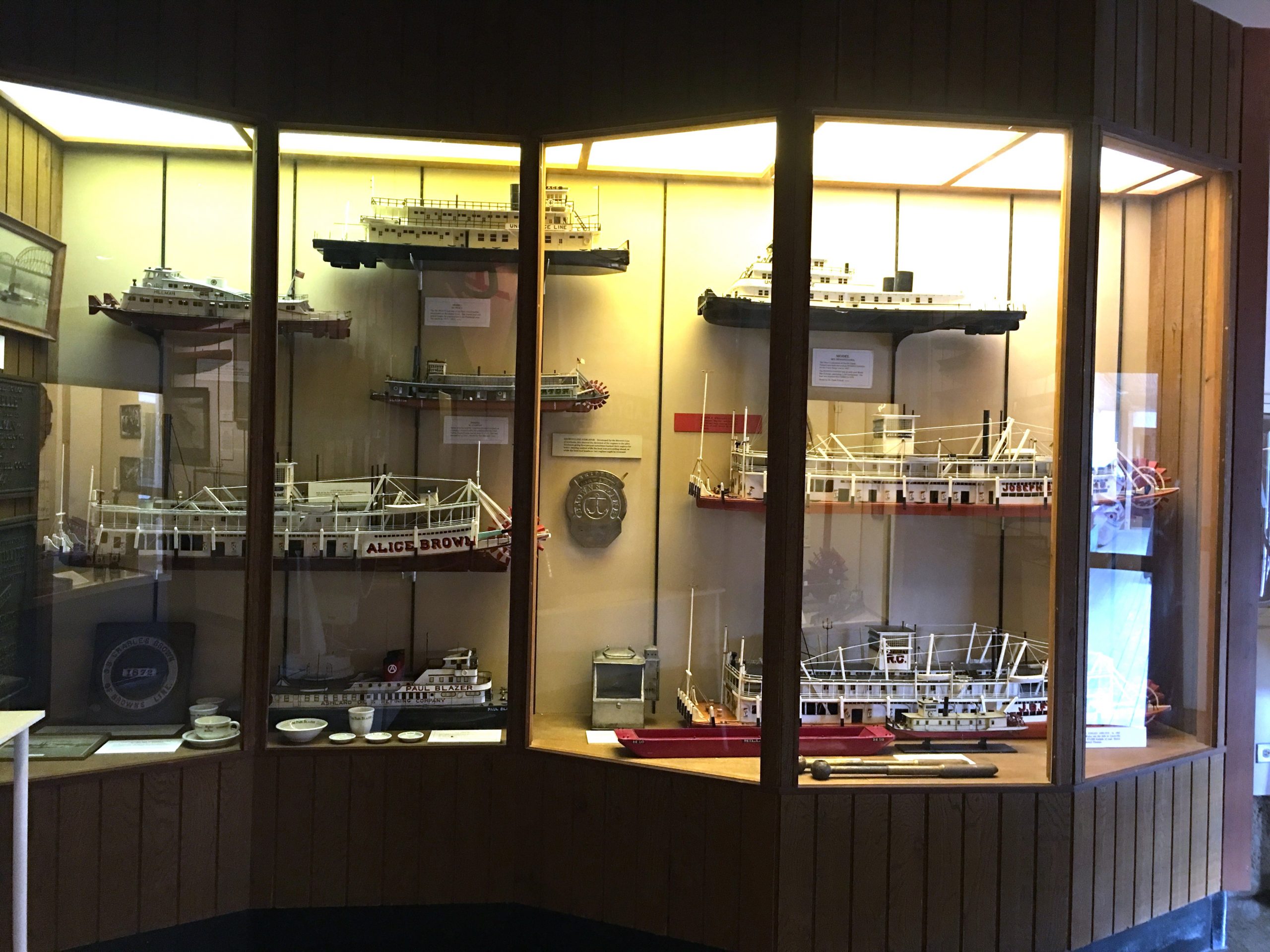
On display at the Ohio River Museum are several vessels which were used to transport goods and passengers along the Ohio River. In addition, there are several displays of items which would have been found in the kitchen and dining rooms as well as personal effects from the officers and crew.
Sailing down the Ohio or Mississippi River on a riverboat is such an historic journey, visiting the modest, less populated river towns would be the opportunity of a lifetime. While riverboat transportation was incredibly popular with the transport of goods and passengers, the mid 1800s changed everything. By this time, the railroads became the primary mode of transportation for passengers and goods, replacing the use of riverboats, for what seemed the end of riverboat travel. Today, passengers can board the Delta Queen with its robust itinerary and the opportunity to experience a riverboat cruise in the footsteps of Mark Twain.
Have you had the opportunity to visit the Ohio River Museum? I would love to know about your experience if you would kindly leave a message in the comments section below. Many thanks for reading about my visit to the Ohio River Museum and wishing you many Happy Travels!
What to See and What to Do:
601 Front Street
Marietta, Ohio 45750
Telephone: 740 373 3717
- Admission Fee: $7.00 to tour the museum and W.R. Snyder steam powered towboat.
- Hours: Saturday from 9:30AM to 5PM, Sunday: 12PM to 5PM, closed Monday and Tuesday, Wednesday – Thursday: 10AM to 5PM; Please refer to the museum’s website to confirm hours of operation.
- Amenities: waterpark, restaurants, group rates, handicap accessible, annual passes, discounts and promotions, attractions, live shows, rides, lego minilands, movies, gardens,
- Length of Visit: Prepare to spend 1 – 2 hours, especially if you plan to tour the W.R. Snyder steam powered towboat.
- Tips for Your Visit: Wear comfortable shoes. The visit to the W.R. Snyder steam powered towboat may require some agility to enter, be prepared.
Where to Stay:
101 Front Street
Marietta, Ohio 45750
Telephone: 740 373-5522
Where to Eat:
Boathouse BBQ
218 Virginia Street
Marietta, OH 45750
Telephone: 740 373 3006
You have to try the Pulled Pork Mac & Cheese! Amazing!
What to Read:
- A Guide to Historic Marietta Ohio, by Lynne Sturtevant
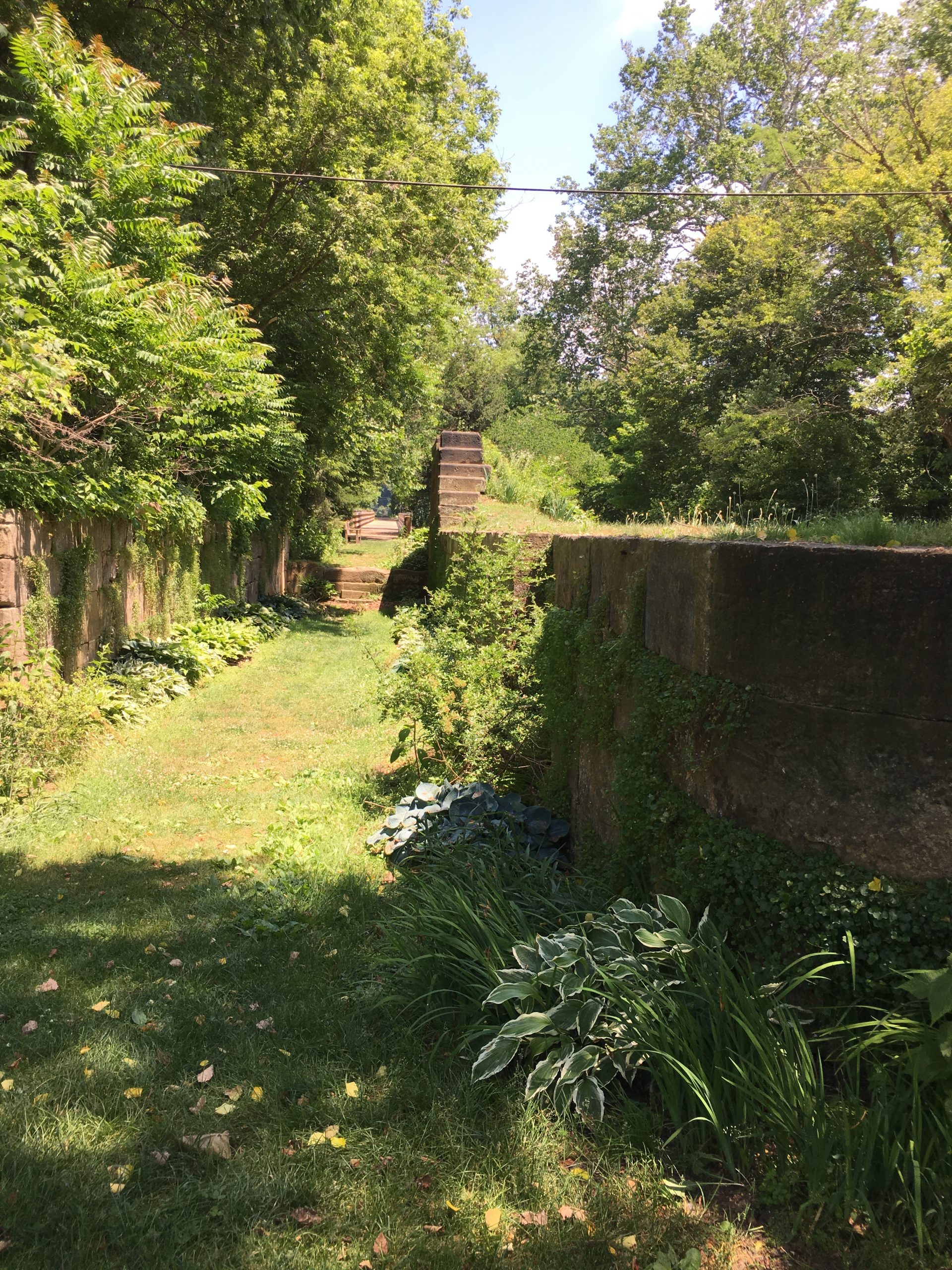
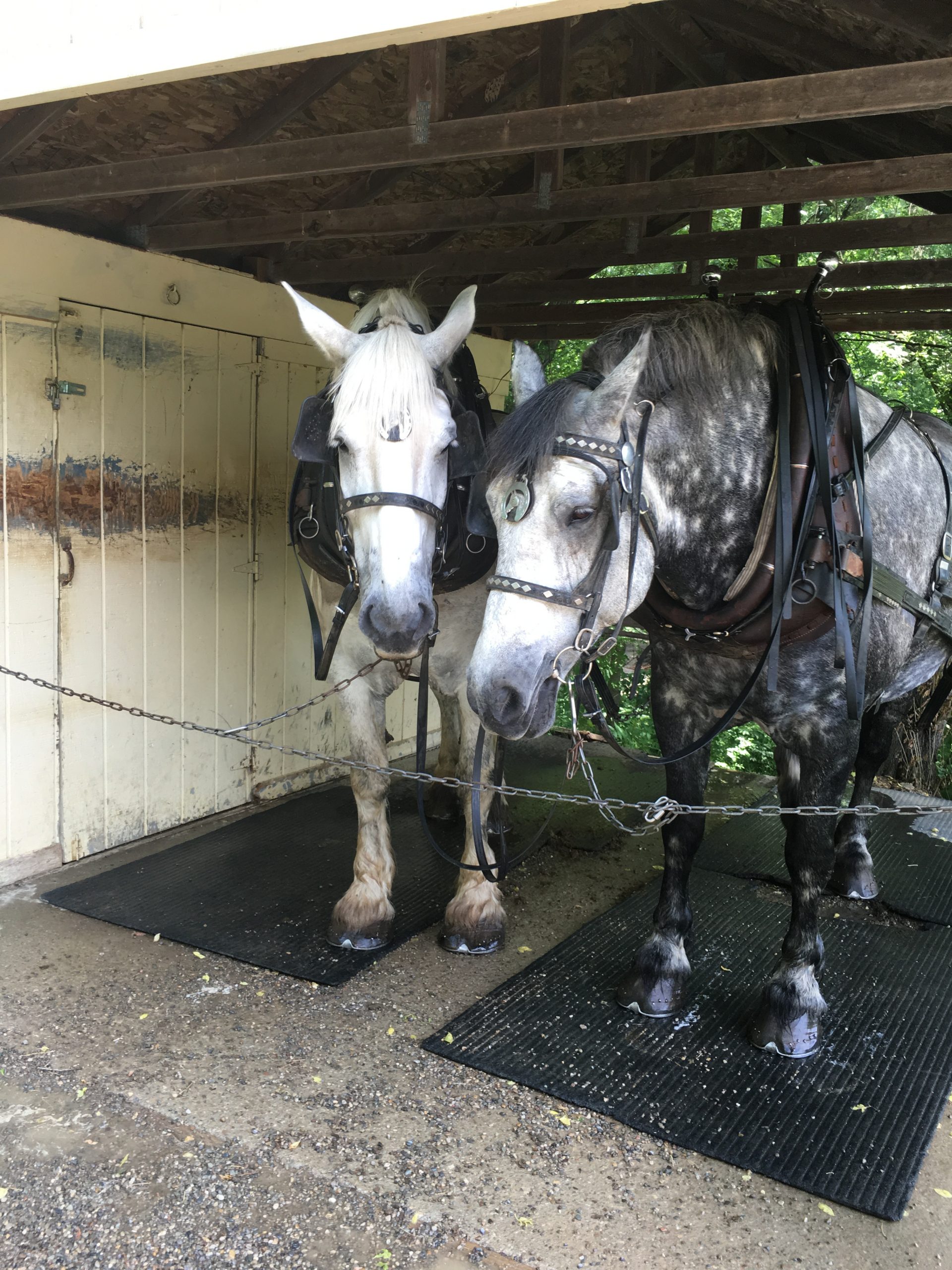
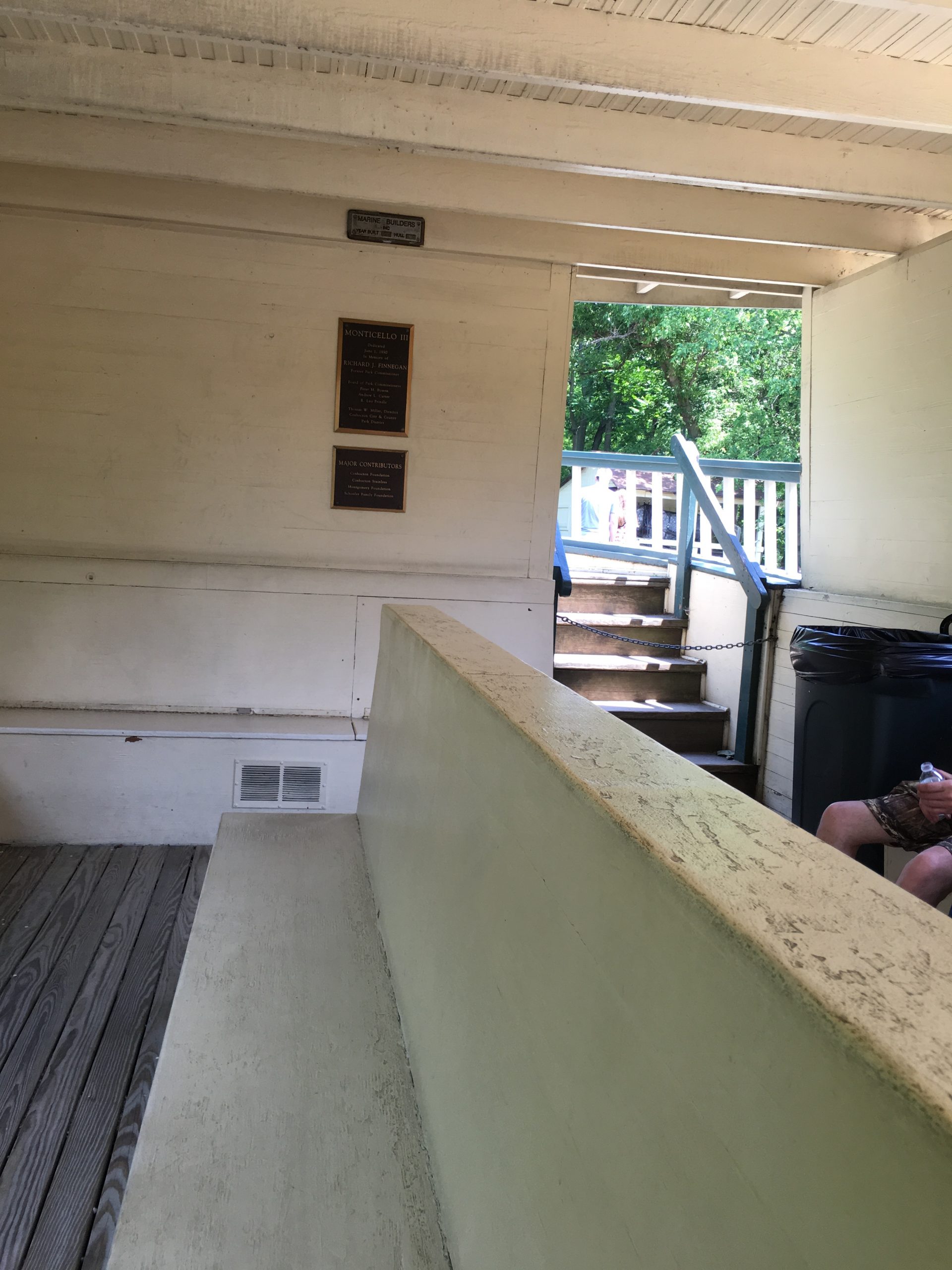
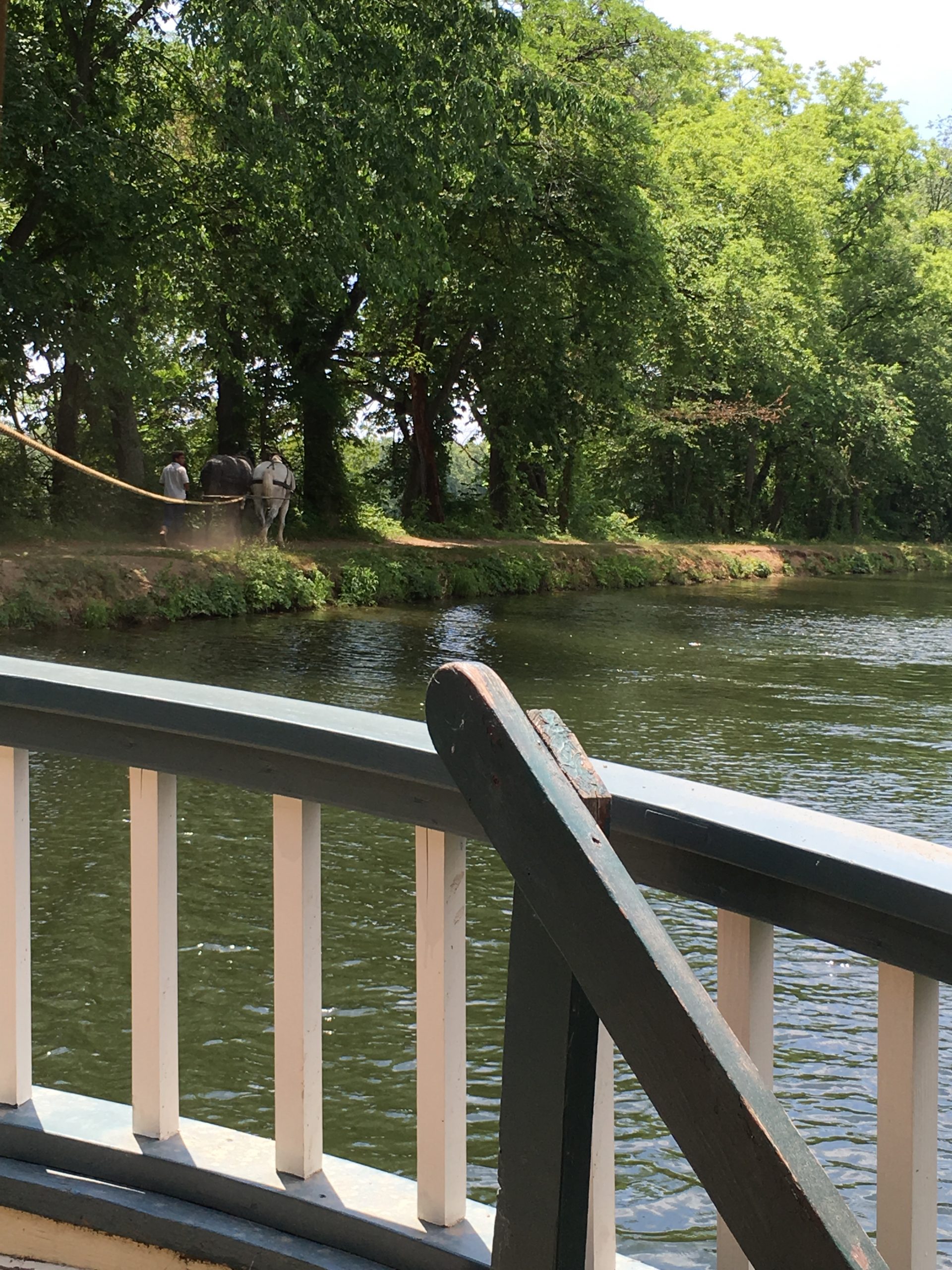
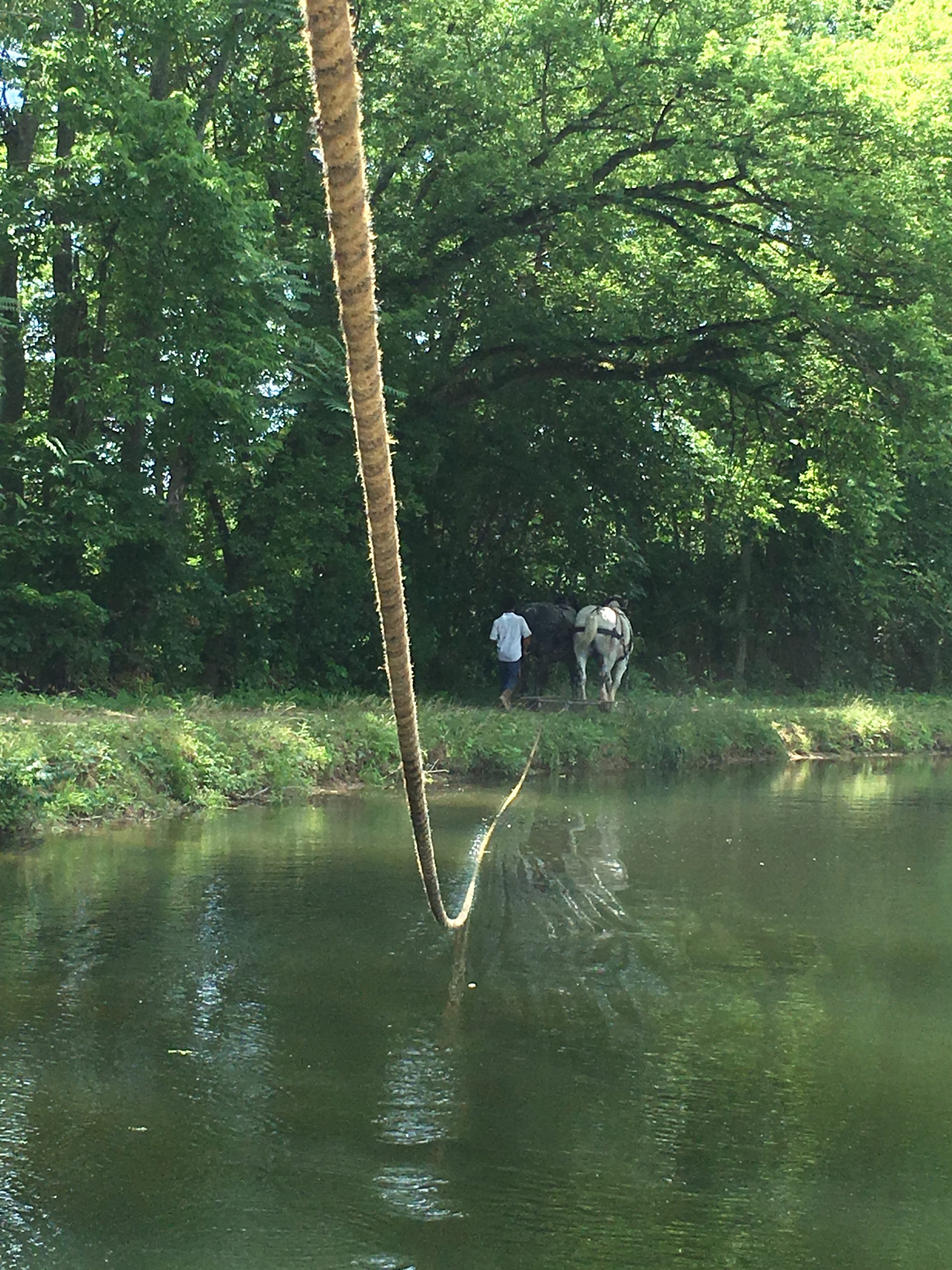
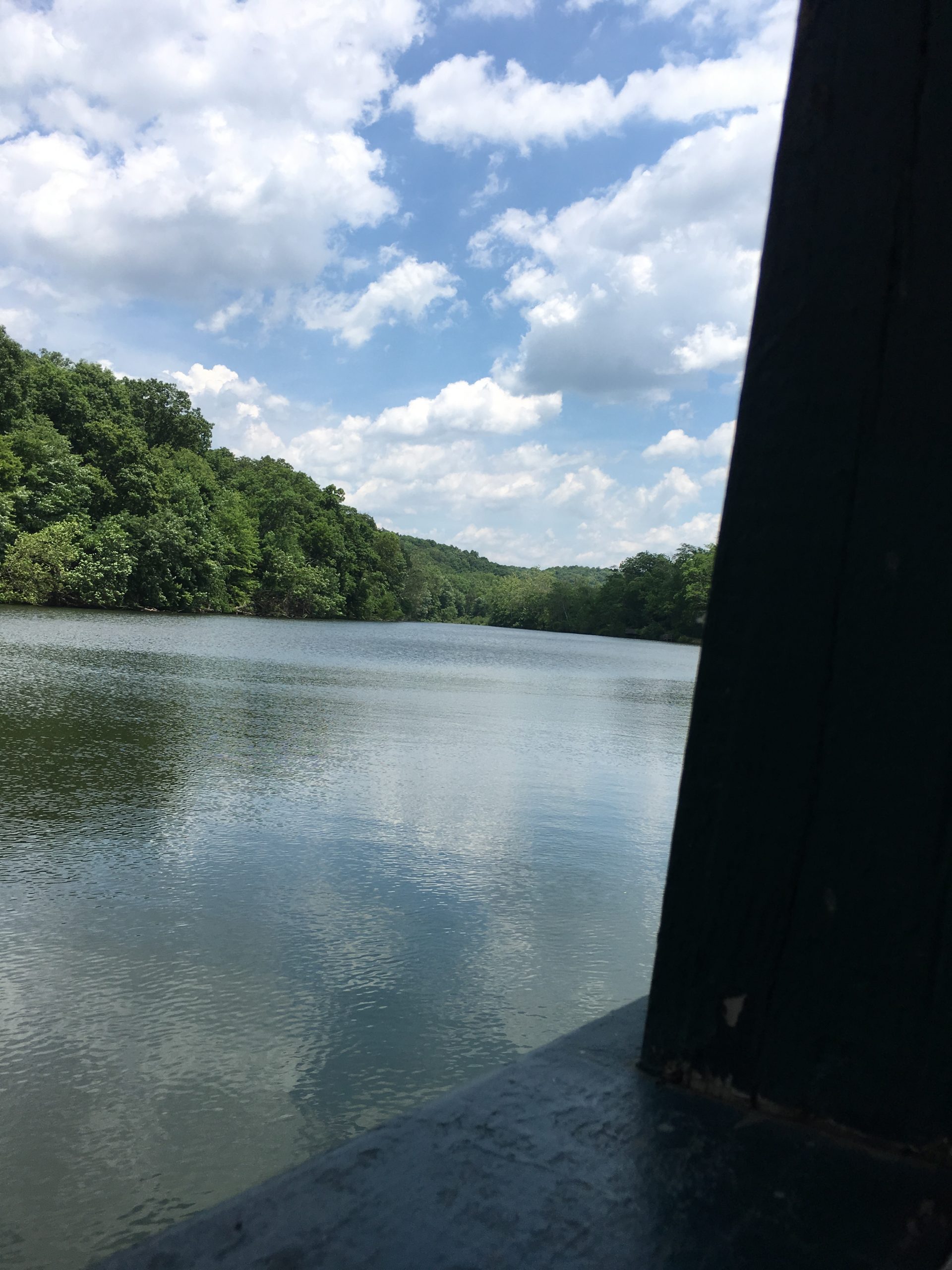
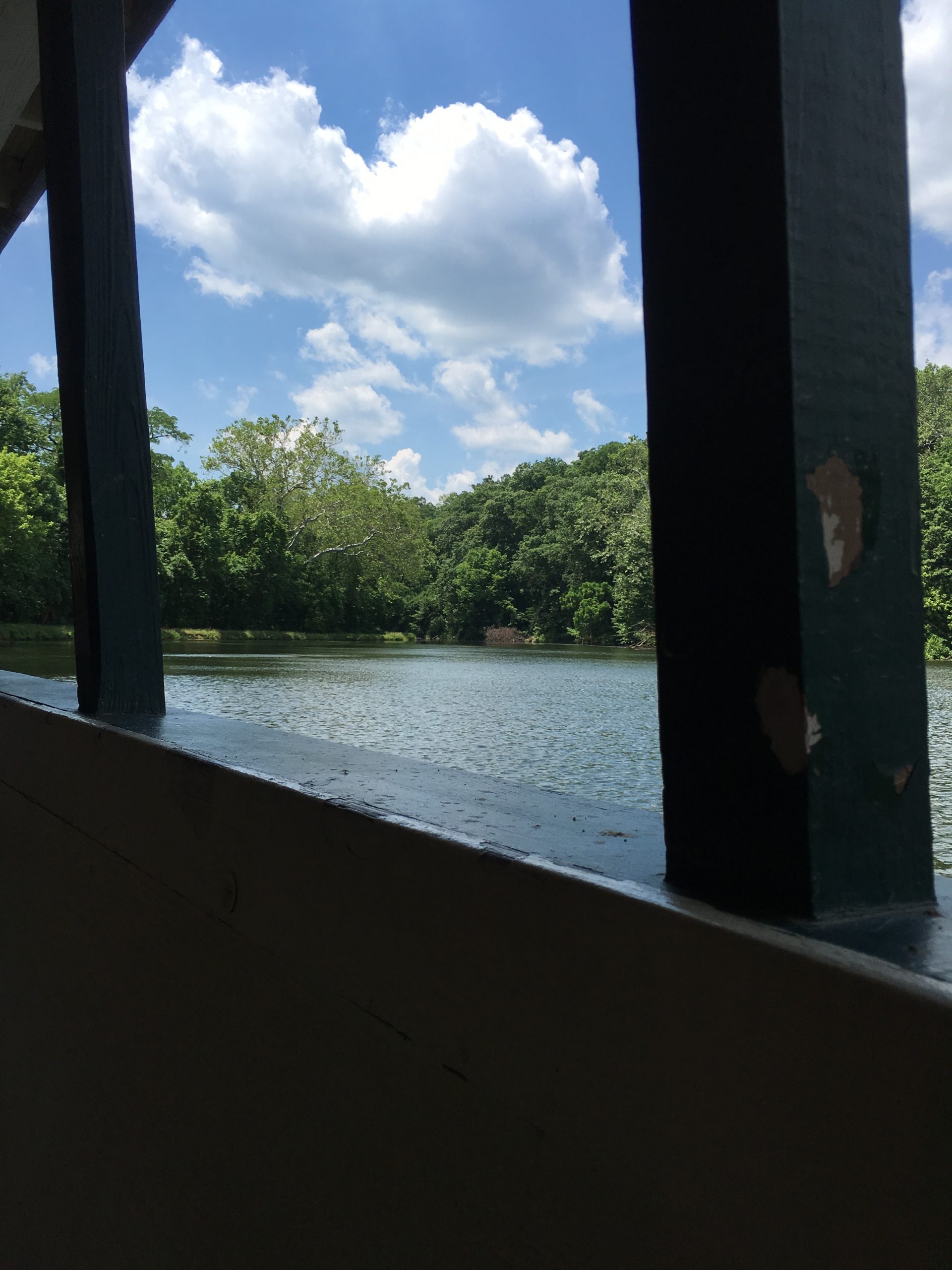
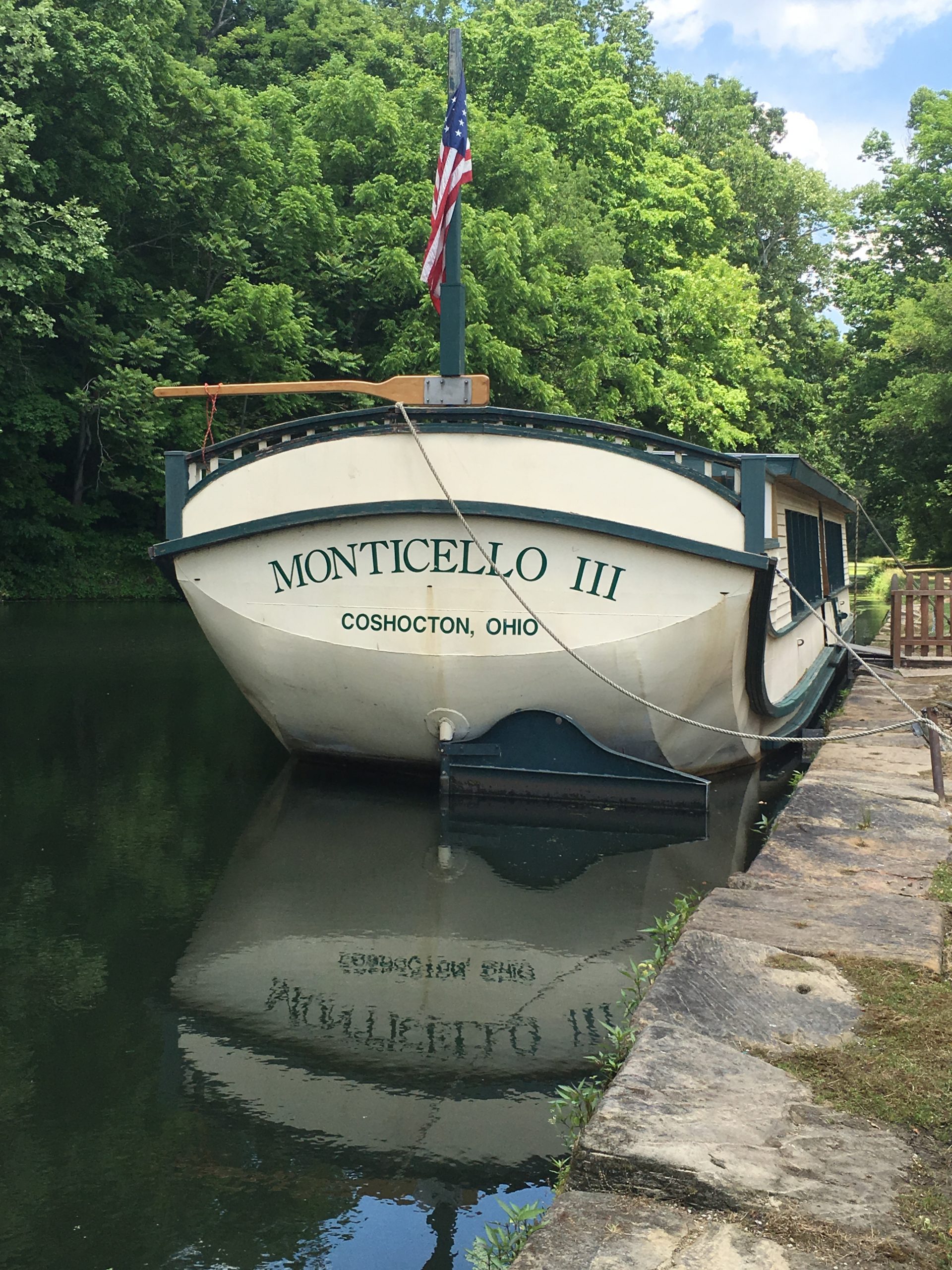

 The first successful steamboat dates back to the late 1700s when John Fitch mastered the building of the vessel with its primary purpose to transport goods along the Delaware River. The Ohio River Museum displays a beautiful replica of the “Pioneer” which was a shipping vessel among the Great Lakes fleets dating back to 1901.
The first successful steamboat dates back to the late 1700s when John Fitch mastered the building of the vessel with its primary purpose to transport goods along the Delaware River. The Ohio River Museum displays a beautiful replica of the “Pioneer” which was a shipping vessel among the Great Lakes fleets dating back to 1901. At the Point in Marietta, additional seaworthy vessels were being built to include the John Farnum schooner. This beautiful vessel is on display at the Ohio River Museum. The Historical Marietta blog provides the following information about this barque.
At the Point in Marietta, additional seaworthy vessels were being built to include the John Farnum schooner. This beautiful vessel is on display at the Ohio River Museum. The Historical Marietta blog provides the following information about this barque.